What is an Upper Endoscopy?
An upper endoscopy enables the physician to look inside the esophagus, stomach, and duodenum (first part of the small intestine).
The procedure might be used to discover the reason for swallowing difficulties, nausea, vomiting, reflux, bleeding, indigestion, abdominal pain, or chest pain.
Upper endoscopies are also known as an EGD, which stands for esophago-gastro-duodenoscopy.
For the procedure, you will swallow (while sedated) a thin, flexible, lighted tube called an endoscope. The endoscope transmits an image of the inside of the esophagus, stomach, and duodenum, so the physician can carefully examine the lining of these organs. The scope also blows air into the stomach, expanding the folds of tissue and making it easier for the physician to examine and navigate.
The physician can see abnormalities, like inflammation or bleeding, through the endoscope that won’t show up on x-rays. The physician can also insert instruments into the scope to treat bleeding abnormalities or remove samples of tissue (a biopsy) for further tests.
Alternative tests for an upper GI endoscopy include a barium x-ray and ultrasound (sonogram) to study the organs in the upper abdomen. Studies of the stool, blood and stomach juices can provide indirect information about a gastrointestinal conditions.
These exams, however, do not allow for a direct viewing of the esophagus, stomach and duodenum, removing of polyps or taking of biopsies.
Preparation
Your stomach and duodenum must be empty for the procedure to be thorough and safe. You will not be able to eat or drink anything after midnight the night before the procedure. During your office visit, you’ll be provided with additional information to prepare for the procedure.
The Procedure
The EGD is usually performed as an outpatient procedure at our facility, the Loudoun Endoscopy Group. Our providers also perform procedures at the hospital. The location, date, and time will be determined during your office visit.
After registration, a nurse will direct you to the pre-operative area. You will then be asked to change into a hospital gown and a small intravenous line will be inserted. Vital signs will be taken and an anesthesiologist will talk to you about the sedation.
You will then be taken back to the procedure room where you’ll meet the physician performing the procedure. An anesthesiologist or certified nurse anesthetist will then administer the sedation and monitor you during your procedure.
Before it is performed, we will place a bite block in your mouth and an anesthesiologist or nurse anesthetist, through the intravenous line, will sedate you. Throughout the entire procedure, he or she will monitor your vital signs, airway and breathing continuously.
The scope will pass through your throat, causing little or no discomfort. The procedure takes 15 to 30 minutes and is seldom remembered by the patient.
After the Procedure
You will be in the recovery area for approximately thirty (30) minutes where your vital signs will be monitored by a registered nurse.
Before you leave, the doctor will speak with you, and your family, in regards to the findings of your procedure.
Once you are fully awake, you’ll be discharged and escorted out of our facility.
You will not be able to drive or operate heavy machinery for the rest of the day. It is imperative that you have someone drive you home.
You may resume a normal diet after the procedure. Although, you may want to avoid greasy foods as your first meal.
If biopsies were taken, expect to be notified of your results via mail, telephone, or web message through our portal (if you have an active account) in about two to three weeks.
Side Effects and Complications
A temporary, mild throat irritation sometimes occurs after the exam. Serious risks with an upper GI endoscopy, however, are very uncommon. One such risk is excessive bleeding, especially with removal of a large polyp. In extremely rare instances, a perforation, or tear, in the esophagus or stomach wall can occur. These complications may require hospitalization and, rarely, surgery.
Post-Operative Instructions
Do not drive a car or operate machinery for at least twelve hours (12) after the examination. You should not do strenuous activity or exercise for at least 24 hours. You may eat and drink normally, unless you are instructed otherwise. Mild abdominal discomfort and bloating may be common the first day after the procedure. Rest and eating lightly may reduce these symptoms. A small amount of blood from the rectum may be seen.
For two days after your procedure watch for the following: Severe or persistent abdominal pain; Temperature elevation/fever; Bloody bowel movement(s) or rectal bleeding; and/or Vomiting. You will be given additional instructions after the procedure: follow the instructions given to you regarding aspirin or other blood thinning medications. If you have questions, concerns or problems, please call our office at 703-723-3670.

